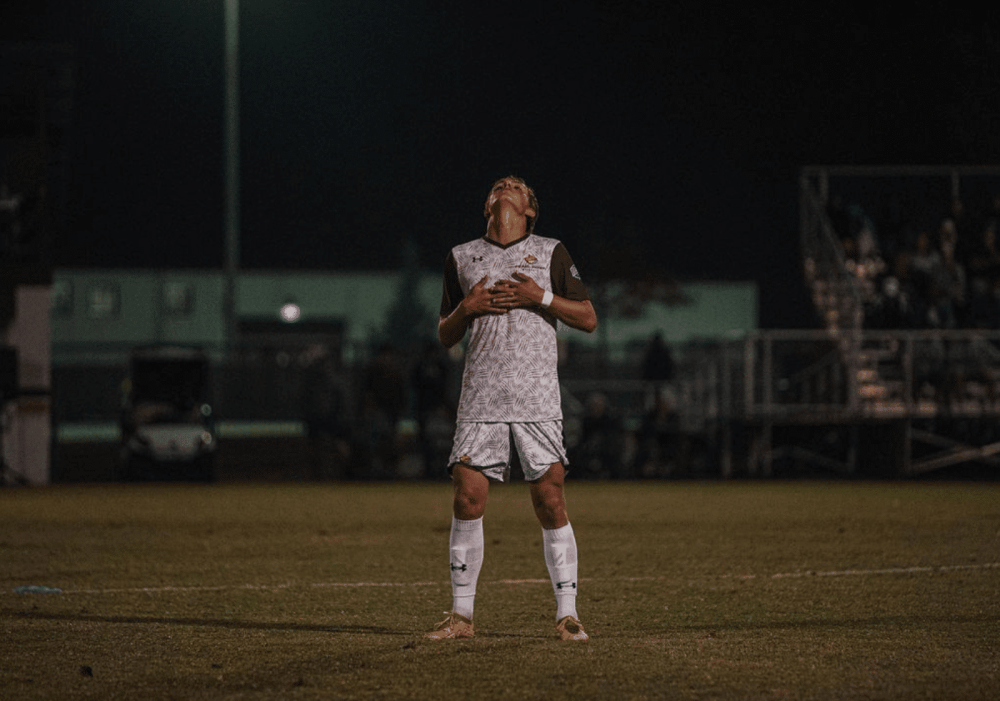Understand the 4 seasons of College
What does a year in college in the US actually look like for a soccer player?
Life as a student athlete at an American college is a unique blend of academic challenges and athletic endeavor. Each season follows its own rhythm that shapes the players’ everyday life and there is a big difference in life whether it’s spring, summer, fall or winter.
In this article, we dive into the special yearly cycle that defines and shapes the life and everyday life of a college football player.
Spring: Training matches, development and a more balanced everyday life
- February - May.
College spring break in the US is tailor-made for development. It’s also a time when student athletes get to experience a more balanced approach to sport and academics, something that more closely resembles life as a normal student in the US. This is mainly due to the fact that the official college season doesn’t start until late summer and therefore there are no weekly trips to different states. Instead, there’s time for plenty of training sessions on the pitch and in the weight room. These months allow college coaches to experiment with team composition and style of play, while allowing individual athletes to build on their physique – something that has always been a priority and important area in American sports. At the same time, you also have more time for your studies and don’t have to catch up as much due to matches and other athletic commitments.
Although no official games are played during the spring, you’ll participate in a variety of practice games against teams you wouldn’t normally face in your college league. A good example is our client, Lucas Christensen, who is currently playing and studying at Florida International University – they will be playing against Lionel Messi’s Inter Miami CF during their spring season.
Another example is our client, Nikolai Røjel, who recently transferred from Wofford College to UCLA. In the spring training matches, they will face Los Angeles FC, among others.

Summer: Off-season or Summer League?
- May - August.
Summertime is first and foremost a time for vacation. Schools and campuses are closed until August, and student athletes typically have two options: either go home and vacation with family and friends or join a Summer League team and play in an official tournament in the US over the summer. Many college players choose the option to participate in Summer League as it’s an excellent chance to maintain their development – and for the really skilled players – an opportunity to be spotted by teams from USL or MLS. These leagues often follow the tournaments, as it has almost become a tradition for ambitious and talented college players to play in Summer Leagues during their school vacation.
One example is our client, Jonas Lyshøj, who currently plays and studies at Bryant University in NCAA Division 1. Last summer he stayed in the US and played for Peoria City S, which competes in USL 2.

Fall: The official start of the season and the quest for the national championship
- August - December.
After the summer, student athletes arrive on campus a few weeks before other students. Why? Because the first weeks of fall – and the brand new college year – start with the legendary American preseason. Two weeks with multiple training sessions, both on the pitch and in the weight room, every single day. For freshmen, it can be a cold bucket of water in the head, a shock experience both mentally and physically, but it’s great and crucial for getting ready for the high-intensity college season, which at its most intense has up to three tournament games a week.
In the fall, your primary focus and most of your energy will be on your sport. When you’re not playing a game, you’re recovering and preparing for the next game. When you’re not playing or recovering, you’re probably traveling by bus or plane to an away game. It takes extra effort to juggle the high-intensity season with your studies. It’s part of the experience and it’s what makes you better – both as a person and as an athlete.
When the season is underway and the games are in full swing, the first thing you play is what’s known as Conference Games. In other words, you play against teams from your geographical region and fight to qualify for the playoffs, where the best teams from the surrounding regions meet. From here, they qualify for the most prestigious tournament in the college game: The National Championship – also known as The College Cup.
Here, the best teams in the country gather in early December to compete for the title of national champions.

Winter: End of season, exams and Christmas vacation
- December - February
After the season culminates with the national championships in the first weeks of December, you look forward to the Christmas holidays and a much-needed break from the high-intensity fall season, which takes a toll – both physically and mentally, juggling academic commitments with the goal of making it as far as possible in the national championships.
Before you can take your Christmas break, however, there are exams before the semester can be completed and the books can be closed. Most international student-athletes go home to their respective countries and spend Christmas or the equivalent with friends and family before the new semester starts in February.
Understand the 4 seasons of College Read More »































































